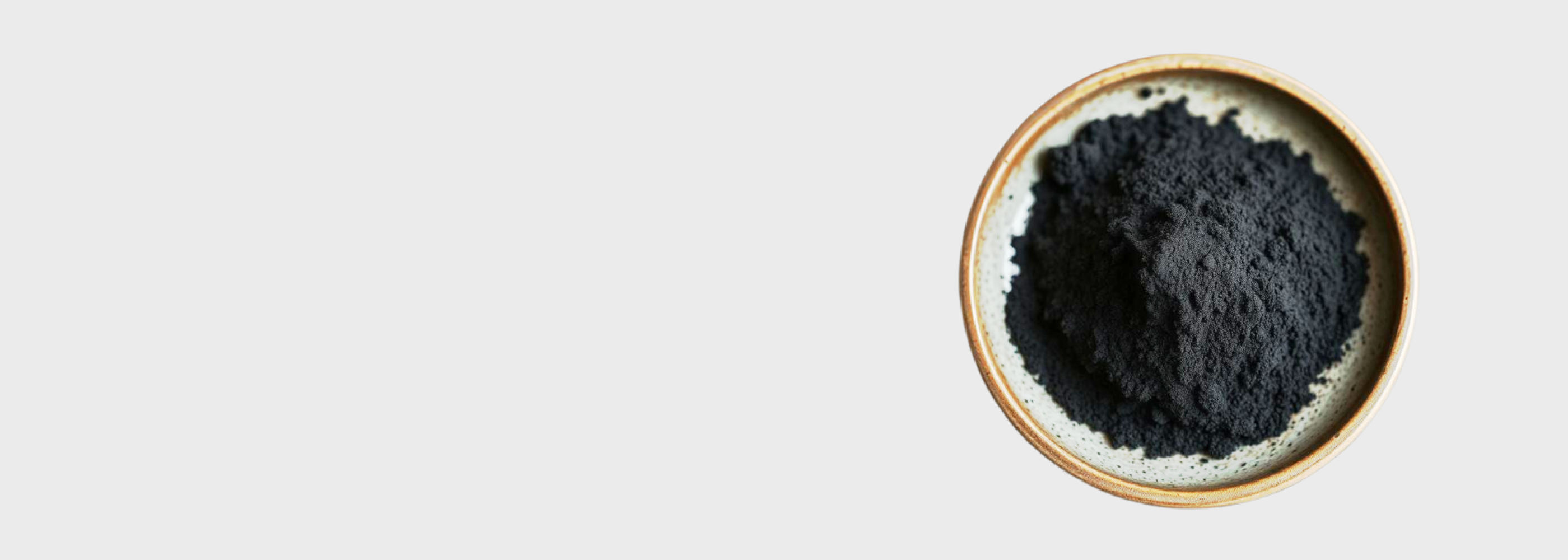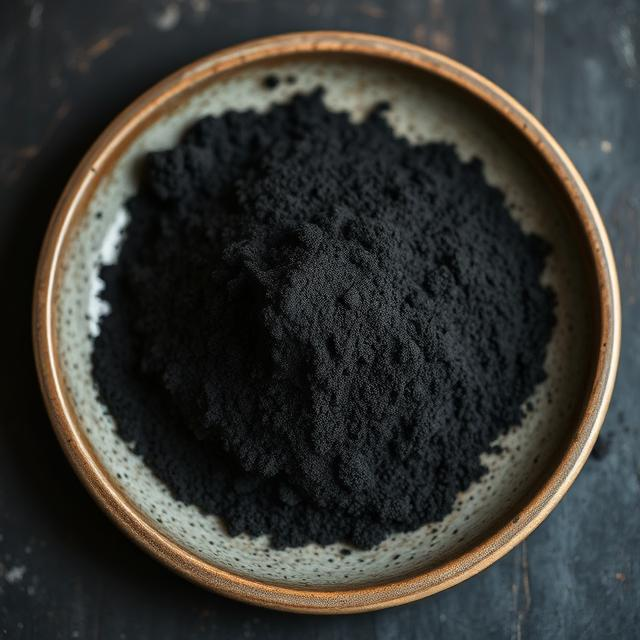
Top 10 Industrial Applications of Copper Oxide in 2024
Discover how this versatile chemical compound is transforming multiple industries
Introduction
Copper oxide, particularly in its two main forms—cupric oxide (CuO) and cuprous oxide (Cu₂O)—has emerged as a fundamental material in numerous industries due to its remarkable physical and chemical properties. With increasing focus on sustainable and efficient manufacturing processes, copper oxide compounds continue to find new applications across various sectors.
As a leading manufacturer and supplier of high-quality chemical compounds in Pakistan, Sulman Traders has been at the forefront of producing premium copper oxide products for multiple industries. In this comprehensive guide, we'll explore the top 10 industrial applications of copper oxide that are shaping manufacturing processes worldwide in 2024.
1. Catalysts in Chemical Manufacturing
Copper oxide stands as one of the most efficient catalysts used in various chemical reactions, particularly in industrial settings. Its catalytic properties are extensively utilized in:
- Oxidation reactions for producing various chemicals
- Destruction and detoxification of hazardous materials including cyanides
- Conversion of carbon monoxide to less harmful carbon dioxide
- Decomposition of nitrogen oxides in industrial emissions
- Hydrogen production through water-gas shift reactions
The high surface area and unique electronic structure of copper oxide nanoparticles enhance its catalytic efficiency, making it an economical alternative to precious metal catalysts in many applications.

Copper oxide powder used for catalytic applications
2. Energy Storage and Batteries
As the world moves toward renewable energy sources, efficient energy storage solutions become crucial. Copper oxide plays a significant role in this sector:
- Serves as an electrode material in lithium-ion batteries, offering high theoretical capacity
- Used in supercapacitors to enhance energy storage capability
- Component in solar cells to improve light absorption and energy conversion
- Applied in thermal energy storage systems due to its excellent heat transfer properties
Recent research has shown that nanostructured copper oxide with carbon coating can significantly improve battery performance, with remarkable rate capability and long cycling life.
3. Agriculture and Fungicides
Copper oxide has been a cornerstone in agricultural applications for decades, primarily due to its fungicidal properties:
- Primary component in fungicides to protect crops from fungal diseases
- Used as a micronutrient fertilizer to correct copper deficiencies in soil
- Applied in seed treatments to prevent fungal infections during germination
- Component of slow-release fertilizers for sustained nutrient delivery
Modern formulations have improved the efficiency and reduced the environmental impact of copper oxide-based agricultural products, making them compatible with sustainable farming practices.
4. Electronics and Semiconductor Manufacturing
The semiconductor properties of copper oxide make it valuable in electronics manufacturing:
- Used in the production of integrated circuits and microchips
- Component in gas sensors for detecting harmful gases like carbon monoxide
- Applied in transparent conductive films for touchscreens and solar cells
- Utilized in resistive random-access memory (RRAM) devices
- Incorporated into field-effect transistors and other electronic components
5. Antimicrobial Applications
One of the most promising areas of copper oxide application is in antimicrobial products:
- Incorporated into fabrics and textiles for antimicrobial properties
- Used in wound dressings to prevent infections
- Added to paints and coatings for self-sanitizing surfaces
- Component in water filtration systems for microbial control
- Applied in food packaging to extend shelf life
The COVID-19 pandemic has further highlighted the importance of antimicrobial surfaces, boosting the demand for copper oxide-based products in healthcare settings and public spaces.
6. Pigments and Ceramics
The distinctive color properties of copper oxide make it valuable in various artistic and industrial applications:
- Used as a coloring agent in glasses, producing blue, green, or red hues
- Essential component in ceramic glazes for decorative effects
- Applied in enamel production for jewelry and decorative items
- Used in porcelain manufacturing for unique color patterns
The color produced depends on the copper oxide concentration, firing temperature, and the presence of other materials, allowing for a wide range of artistic expressions.

Copper oxide is used in advanced antimicrobial applications
7. Marine Applications
Copper oxide plays a crucial role in marine applications, particularly in protecting underwater structures:
- Active ingredient in antifouling paints for ships and marine structures
- Prevents the attachment of marine organisms like algae, barnacles, and mollusks
- Helps reduce fuel consumption by maintaining smooth hull surfaces
- Used in protecting underwater cables and pipes from marine growth
Modern formulations aim to balance effectiveness with environmental sustainability, addressing concerns about copper accumulation in marine environments.
8. Gas Sensing and Environmental Monitoring
The electrical properties of copper oxide change in the presence of specific gases, making it useful for sensing applications:
- Detectors for carbon monoxide, hydrogen sulfide, and other toxic gases
- Sensors for monitoring air quality in industrial and urban environments
- Components in breath analyzers for medical diagnostics
- Environmental monitoring of pollutants in water and soil
Nanostructured copper oxide sensors offer higher sensitivity and faster response times compared to conventional materials, enabling real-time monitoring of potentially hazardous conditions.
9. Textile Industry
Beyond antimicrobial properties, copper oxide finds various applications in the textile industry:
- Used in fiber dyeing processes for color fastness
- Applied in flame-retardant fabrics for safety applications
- Component in UV-resistant textiles for outdoor applications
- Used in specialized fabrics for medical and healthcare settings
Innovative textiles incorporating copper oxide nanoparticles are being developed for applications ranging from athletic wear to medical compression garments.
10. Emerging Applications in Renewable Energy
As the world transitions to renewable energy sources, copper oxide is finding new applications:
- Photocatalytic conversion of CO₂ into valuable chemicals
- Solar thermal energy harvesting and conversion
- Component in high-temperature superconductors for efficient energy transmission
- Hydrogen production through water splitting using sunlight
- Thermoelectric energy conversion devices
Research into these applications is accelerating, promising more sustainable solutions to global energy challenges.
Quality Considerations in Industrial-Grade Copper Oxide
The effectiveness of copper oxide in industrial applications depends significantly on its purity and specifications. Key factors to consider include:
- Particle size and distribution (especially crucial for catalytic applications)
- Crystallinity and phase composition (affects electrical and optical properties)
- Surface area (important for catalytic and sensing applications)
- Impurity levels (can affect performance in electronic applications)
- Stability in the intended application environment
At Sulman Traders, we ensure that our copper oxide products meet the highest quality standards through rigorous testing and quality control processes, delivering optimal performance across various applications.
Conclusion
Copper oxide's versatility and unique properties continue to drive its adoption across multiple industries. From traditional applications in agriculture and ceramics to cutting-edge uses in renewable energy and nanotechnology, this compound remains indispensable in modern manufacturing processes.
As technological advancements continue, we can expect even more innovative applications for copper oxide, particularly in areas focused on sustainability and efficiency. The ongoing research into nanostructured copper oxide materials promises to unlock even greater potential for this versatile compound.
For industries seeking high-quality copper oxide products in Pakistan, Sulman Traders offers premium-grade materials manufactured to exacting specifications, supporting innovation and excellence across various sectors.
Explore specifications, applications and availability on our Copper Oxide (CuO) product page.
Frequently Asked Questions
What is the difference between cupric oxide (CuO) and cuprous oxide (Cu₂O)?
Cupric oxide (CuO) is a black powder with copper in the +2 oxidation state, while cuprous oxide (Cu₂O) is a red or reddish-brown powder with copper in the +1 oxidation state. They have different crystalline structures, physical properties, and applications. Cupric oxide is more stable in air and is commonly used in catalysts and ceramics, while cuprous oxide is particularly valuable in semiconductor applications and as a fungicide.
Is copper oxide environmentally friendly?
Copper oxide's environmental impact depends on its application and concentration. In appropriate doses, it's an essential micronutrient for plants and animals. However, excessive amounts can be harmful to aquatic organisms. Modern formulations and applications focus on minimizing environmental impact while maximizing effectiveness. Proper handling, application, and disposal practices are essential for environmentally responsible use of copper oxide products.
What are the health considerations when working with copper oxide?
When handling copper oxide, particularly in powder form, appropriate safety measures should be taken to prevent inhalation and skin contact. Direct exposure can cause respiratory irritation and skin discoloration. Always use appropriate personal protective equipment including gloves, safety glasses, and dust masks when handling the material. In industrial settings, proper ventilation systems should be in place to minimize exposure to airborne particles.
How is the quality of copper oxide determined?
Quality assessment of copper oxide includes analyzing particle size distribution, purity level (percentage of copper oxide content), crystal structure, surface area, and impurity profile. Advanced techniques like X-ray diffraction (XRD), scanning electron microscopy (SEM), and inductively coupled plasma mass spectrometry (ICP-MS) are commonly used for these assessments. Different applications may require different specifications, so it's important to select the appropriate grade for your specific industrial needs.
What is the future outlook for copper oxide applications?
The future of copper oxide looks promising with emerging applications in renewable energy, nanotechnology, and advanced electronics. Research is intensifying in areas such as photocatalytic water splitting for hydrogen production, CO₂ conversion to valuable chemicals, and high-efficiency solar cells. Nanostructured copper oxide materials are expected to revolutionize fields including energy storage, sensing technology, and antimicrobial applications. As sustainability becomes increasingly important, copper oxide's role in green technologies is likely to expand significantly.
Looking for High-Quality Copper Oxide Products?
At Sulman Traders, we offer premium-grade copper oxide manufactured to meet the highest industry standards. Whether you need it for catalytic applications, electronics manufacturing, or agricultural purposes, our products deliver consistent performance and reliability.